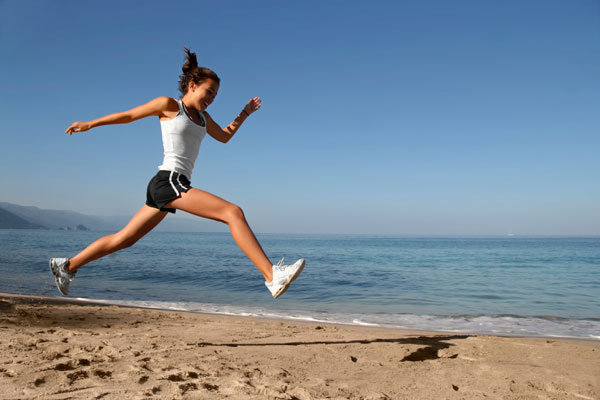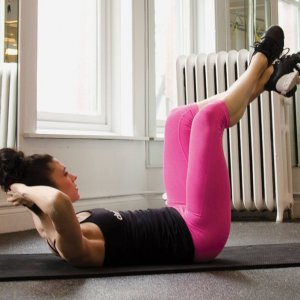 Guest blogger: Bonne Marcus
Guest blogger: Bonne Marcus
A fitness industry expert for 27 years, Marcus holds numerous certifications from the Aerobic Fitness Association of America (AFAA), including Step, Spin, Bosu™, Pre/Post Natal, Youth Fitness, Aqua, and Personal Training. She has taught for New York City’s top health clubs, including Crunch, New York Health and Racquet, and Reebok Sports Club. A recognized name on Long Island, Bonne has taught at Dany Holdstein’s Two Worlds, North Shore Health Club, LA Fitness, Sport time, Equinox and currently teaches at the Sid Jacobsen JCC in Roslyn. Learn more at getfitwithbonne.com.

Photo Credit: iStock
Spring is my favorite time of year. It’s the perfect time for to take your workouts outdoors. Choosing the right activity starts with thinking about the end results you want: Do you want to de-stress, burn calories, or both? Check your community local parks and recreation department for a calendar of events, or try meetup.com; you may consider signing up for a class or group fitness activity to get excited about exercise. There are many to choose from, including walking, in-line skating, biking, hiking, seated stretching, canoeing, and kayaking. Whatever activity you choose, be prepared with the proper exercise equipment and apparel. And most importantly, be sure to check the weather. Being prepared will ensure your healthy lifestyle is a success.
Climate Control-Tips
When early morning temperature are cooler, you are more vulnerable to injury. Specifically, your arm and leg muscles are more prone to cramp or tear. Like the well-designed machine that it is, your body re-routes more blood to your key organs in cold weather, the same way a power company shuts down a few grids to prevent a blackout. A by-product of this redirected blood flow is extremities that are less flexible and limber. Cold muscles, like a cold car engine, can "crack" if you don't warm them up. "Jump-start" your body by running in place or with some other aerobic activity, like jumping jacks. Then, stretch thoroughly before you go outside. Once outside, be sure to take several deep breaths. This will help your body make the transition to the cold before you begin exercising in earnest.
Regulating your Body Barometer
The barometer is a device to measure moisture in the air. How can we tell if our bodies have enough moisture? If you are not sweating as you normally do, chances are, you're dehydrated. Headaches and nausea are also indicators. You feel weaker and sluggish due to the buildup of ammonia, urea, and uric acid. These toxins flood your body when you are not properly hydrated. Drink at least 16 to 24 ounces of water before strenuous exercise. Dehydration occurs most often in the summer, when the glorious rays of the sun make us think we are capable of amazing feats of stamina and strength.
However, a little measure called the heat index (actual heat + humidity) can sabotage any workout. Watch the Weather Channel and adjust the intensity or duration of your workout or think about taking it indoors.
Remember to wear a hat and sunscreen to blunt the effects of the sun, and don’t forget that diffused sunlight on cloudy days is just as likely to cause sunstroke or burn. Make sure the SPF is 15 or higher and to reapply after swimming or sweating.
Being Outdoors and Air Pollution
Depending on which city and time of day, you could be doing yourself more harm than good. The United States Environmental Protection Agency has determined that air with an ozone level of 0.12 parts per million is unfit to breathe for more than one hour. Industrial pollutants, such as nitrogen dioxide, carbon monoxide, and acid particles, can cause cumulative damage to your respiratory system and heart. Ozone levels are usually at their worst from 7 AM to 10 AM and from 5 PM to 8 PM (hello, rush hour!). Again, check the Weather Channel for the air quality each day before you elect to do outdoor exercise. If you are in a city known for its smog or the high ozone content in the air, wait for the air quality to improve or take your workout indoors. The environment outside your body is just as important as the environment within, so use common sense and exercise caution as well as muscles.
—Bonne Marcus
- adminbg's blog
- Log in or register to post comments








